Although we don’t know what personally called Bessie Stringfield to weigh the risk of riding through the Jim Crow South, it’s clear that whatever beckoned her, she was courageous enough not to ignore it. In 1930, she was only 19 years old when she set out on her first of seven cross-country trips. Bold would be an understatement to describe Bessie.
The thing about the open road is that, unlike the Jim Crow South, it does not discriminate. There exists no bias between the pavement, the rubber, and the rider. A motorcyclist is defined as one who rides. The motorcycle community is inclusive to all who embark on a two-wheeled journey. If you ride a motorcycle, you check the box. Across the United States, motorcyclists have united to ride for justice and change. As thousands take to the streets in every state and even across the globe, so too do groups of motorcyclists in a show of solidarity. The riders peacefully protest the systemic injustice and lack of equality for people of color and the shortfall of accountability for police brutality.
Motorcycle rides are an ideal way to organize during a pandemic, allowing for protests while maintaining healthy social distancing and putting action behind voices. Many of the rides are simultaneously fundraising for organizations supporting racial equality.
The Ride for Justice in SoCal (held June 6) was organized by Porsche Taylor, founder and editor of the magazine Black Girls Ride, the first motorcycle magazine in celebration of women of color who live to ride. Taylor clarifies that Black Girls Ride is not an exclusive racial statement. Instead, the name seeks to highlight the often overlooked voices of women in the motorcycle industry, especially women of color. More than just a magazine, the BGR movement exists within an inclusive context of celebrating all women who ride.
We Ride for Change took a cruise down the Pacific Coast Highway (run on June 7 and 20) while helping to collect donations for a nonprofit civil rights advocacy group, Color of Change. We Ride for Change will also be organizing rides in New York. These rides welcome all wheels, bikes, trikes, cars, etc. One man reached out to We Ride for Change to thank them for the opportunity for his wife with an autoimmune disease to protest safely.
As rides continue to be scheduled across the country, it’s clear we’re in the midst of change for racial equality, and perhaps the pandemic has created a perfect storm for this revolution to take place.
With people stuck inside for weeks and months, many of them newly without work, in the midst of economic collapse, we were all horrified by the video of the needless killing of an unarmed black man, George Floyd. This came after the news of Ahmaud Arbery and Breonna Taylor, and on the same day that Christian Cooper, a birder in Central Park, had the police threatened as a weapon against him. With a nation glued to our screens as our only access to the outside world, and 30-percent unemployment, we’ve never been paying better attention to these issues. Truly, enough is enough.
But protesting during a pandemic is tricky, even on motorcycles. Thanks to efforts by Engines for Change (E4C), an organization of motorcyclists initially mobilized for beach cleanups, who have been using motorcycles to assist those in need during the times of COVID. Since March, E4C has transported more than 24,000 face masks and 15 gallons of hand sanitizer to hospitals, frontline workers, nonprofits, and to and from suppliers in the New York City area. Once the Black Lives Matter protests began, E4C began handing out more than 150 face masks and 2,000 3-D-printed face shields to protestors, which in addition to protecting wearers from the novel coronavirus, they also protect against tear gas and pepper spray. They’ve also worked to distribute hundreds of bottles of hand sanitizer made and donated by Moto Spirits, a Brooklyn-based distillery that switched to making hand sanitizer once shortages hit in March. These necessary PPE have gone to Black Lives Matter protests and the local homeless population.
Engines for Change is also working on a short documentary film covering the COVID relief efforts by motorcyclists in NYC since April. To see how you can get involved with its work, head to enginesforchange.org.
In Minneapolis, where the killing of George Floyd took place, Cafe Racers of Instagram (CROIG) founder David Chang helped out with Kareem Ragah’s art installation projecting the faces of unarmed people of color killed by police. The massive projection lit up the side of the old Mill City Museum, which could be seen from the distant overpass. Because a curfew was instated, which many believed violated their First Amendment right to assembly, the nighttime projection also served as a way for these rebels with a cause to stand up in peaceful protest.
Some motorcyclists are working to give voice to the voiceless, such as Lance Jones of ActionJonze, as he gets ready to embark on a 50-state journey to connect with and share the stories of people of color working toward positive change.
It’s up to all of us to listen to and remember the unheard or forgotten voices of those in the minority within the motorcycle community.
William Butler Johnson was the first African-American to join the American Motorcyclist Association (AMA) and became a fearless hill-climbing racer in the 1920s. A lover of motorcycles and people, he also became the first African-American Harley-Davidson dealer.
Cliff Vaughs was compelled to ride his chopper around the American South as much as possible, not solely for the love of riding, but also for people to see that diversity exists on two wheels. He was a civil rights activist, filmmaker, and dreamer, designing the iconic “Captain America” chopper used for the 1969 film, Easy Rider, and many say he even coined the title. Because he and the black man who actually built the famous bikes, Ben Hardy, were fired partway through the creation of the film, neither of them were given a shred of the credit they deserve.
History lives on in the contemporary voices of the motorcycle community from Austin “Brown Sugar” Johnson and “Spade” George Bennett, among the first people of color riding choppers and immersed in bike building culture back in the 1960s and 1970s in NYC. These two have maintained a close friendship that kindled around a shared love of motorcycles that began more than 50 years ago. Along with their touching story of camaraderie, their phenomenal photos of the motorcycle scene for people of color throughout the years have been compiled in a film titled Sugar & Spade, which has been on tour but has yet to be released to the general public.
Johnson, now more commonly known as “Shovelhead Austin,” said that at the time, he and Spade George didn’t presume to be making history, living their lives on motorcycles within America’s chopper culture—they were in it for the pure joy of riding.
When Porsche Taylor describes her inspiration for creating the magazine and movement, Black Girls Ride, she describes the courageous journeys of rebel icon Bessie Stringfield. Bessie, later known as “The Motorcycle Queen of Miami,” started out riding at the age of 16, when she fell in love with motorcycles and convinced her adoptive mother to let her have one. Her first bike was an Indian Scout, and within three years of riding, she left home on her first cross-country trip. American roads were mostly dirt back then, as the interstate system would not be built for another 25 years. She raised funds for her travels along the way, performing motorcycle stunts at carnivals. It’s hard to imagine a more courageous outlook on life and motorcycling, as the first woman of color to ride a motorcycle across the US, she faced the blatant discrimination of Jim Crow laws. She therefore was often not allowed inside businesses, even for food and shelter. When turned away from motels, she would sleep on her motorcycle.
Bessie Stringfield later founded the Iron Horse MC in Miami in the 1950s. Throughout her life she owned 27 Harleys and rode nearly up until her death in 1993. Porsche Taylor is driven to carry on the legacy of Stringfield, honoring her intrepid spirit to encourage other women of color to ride.
Among all the beautiful diversity that exists on our planet, one simple fact among motorcyclists remains the same: we’re all in it for the pure joy of riding.
“If I don’t ride, I won’t live long. And so I never quit.” —Bessie Stringfield












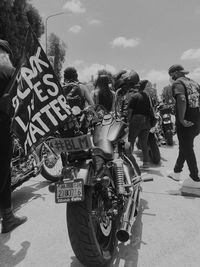
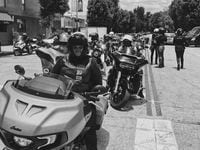





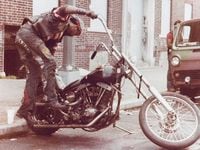
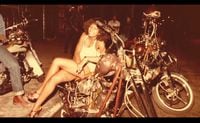
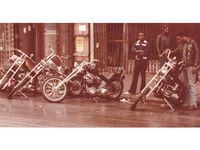
/cloudfront-us-east-1.images.arcpublishing.com/octane/VZZXJQ6U3FESFPZCBVXKFSUG4A.jpg)
/cloudfront-us-east-1.images.arcpublishing.com/octane/QCZEPHQAMRHZPLHTDJBIJVWL3M.jpg)
/cloudfront-us-east-1.images.arcpublishing.com/octane/HXOUJXQWA5HBHGRO3EMJIGFMVI.jpg)

/cloudfront-us-east-1.images.arcpublishing.com/octane/3TIWWRV4JBBOLDVGRYECVVTA7Y.jpg)
/cloudfront-us-east-1.images.arcpublishing.com/octane/KIX5O23D5NAIBGFXBN3327DKZU.jpg)
/cloudfront-us-east-1.images.arcpublishing.com/octane/7GJYDUIPXRGMTMQKN6ONYOLBOU.jpg)
/cloudfront-us-east-1.images.arcpublishing.com/octane/MUQLOVLL2ZDGFH25ILABNBXKTI.jpg)
/cloudfront-us-east-1.images.arcpublishing.com/octane/TNOU5DNE2BC57MFPMGN2EIDXAM.jpg)
/cloudfront-us-east-1.images.arcpublishing.com/octane/GTCXACQGJ5HAPDTGWUQKDEH44E.jpg)
/cloudfront-us-east-1.images.arcpublishing.com/octane/S35YGSEMEZB4BLTDJTSZPF4GLA.jpg)
/cloudfront-us-east-1.images.arcpublishing.com/octane/5UOT6HPX2JFMRJAX6EH45AR4MQ.jpg)
/cloudfront-us-east-1.images.arcpublishing.com/octane/OKWOJWAKP5EP3OACCRRWPCIX2Q.jpg)
/cloudfront-us-east-1.images.arcpublishing.com/octane/2WF3SCE3NFBQXLDNJM7KMXA45E.jpg)
/cloudfront-us-east-1.images.arcpublishing.com/octane/G4MG6OUCJNBSHIS2MVVOTPX65E.jpg)
/cloudfront-us-east-1.images.arcpublishing.com/octane/IIGGWFOTOJGB7DB6DGBXCCMTDY.jpg)
/cloudfront-us-east-1.images.arcpublishing.com/octane/QSTCM6AVEZA5JJBUXNIQ3DSOF4.jpg)
/cloudfront-us-east-1.images.arcpublishing.com/octane/U4I7G625B5DMLF2DVIJDFZVV6M.jpg)
/cloudfront-us-east-1.images.arcpublishing.com/octane/B6XD6LS6IVCQPIU6HXDJSM3FHY.jpg)
/cloudfront-us-east-1.images.arcpublishing.com/octane/ICL63FEDDRDTTMINYICCEYGMDA.jpg)
/cloudfront-us-east-1.images.arcpublishing.com/octane/FCGZHQXRBZFLBAPC5SDIQLVF4I.jpg)
/cloudfront-us-east-1.images.arcpublishing.com/octane/WNOB6LDOIFFHJKPSVIWDYUGOPM.jpg)

/cloudfront-us-east-1.images.arcpublishing.com/octane/X33NU3E525ECRHXLNUJN2FTRKI.jpg)